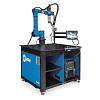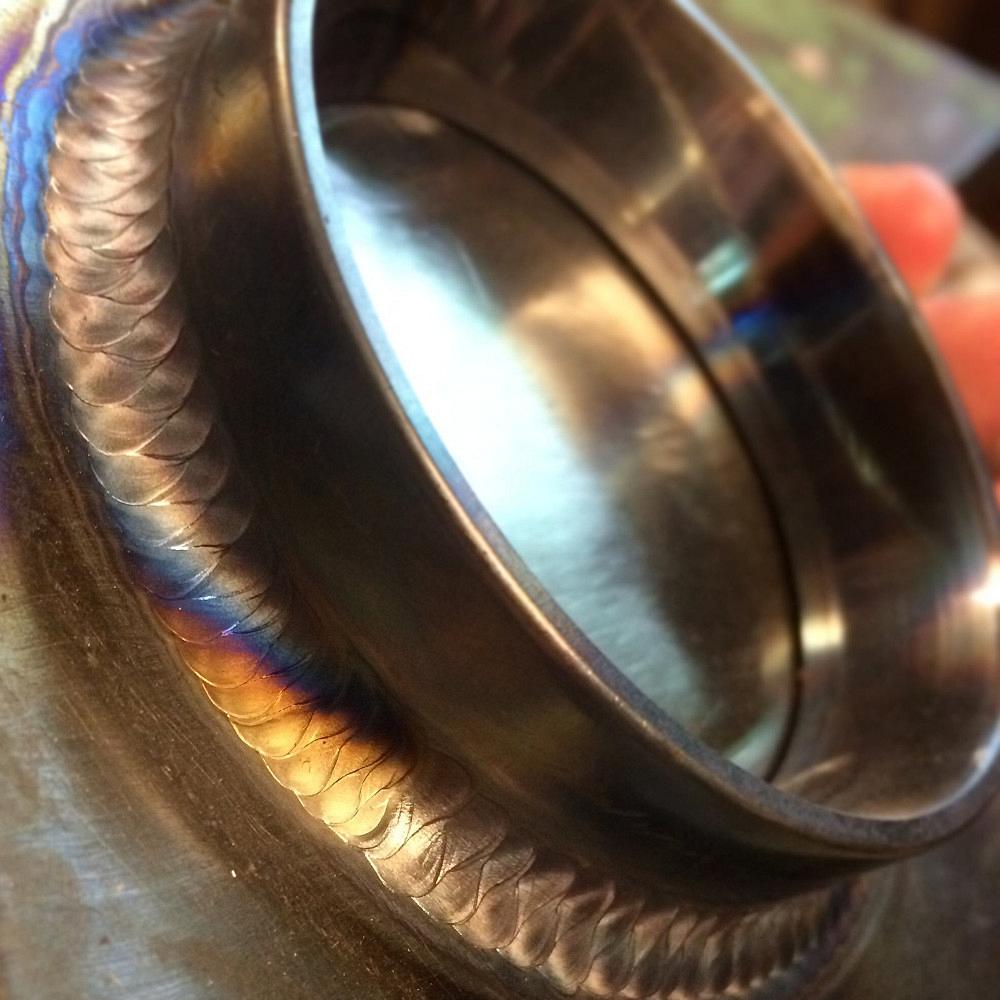Owner, Brown Dog Welding
- FMA
- The Fabricator
- FABTECH
- Canadian Metalworking
Categories
- Additive Manufacturing
- Aluminum Welding
- Arc Welding
- Assembly and Joining
- Automation and Robotics
- Bending and Forming
- Consumables
- Cutting and Weld Prep
- Electric Vehicles
- En Español
- Finishing
- Hydroforming
- Laser Cutting
- Laser Welding
- Machining
- Manufacturing Software
- Materials Handling
- Metals/Materials
- Oxyfuel Cutting
- Plasma Cutting
- Power Tools
- Punching and Other Holemaking
- Roll Forming
- Safety
- Sawing
- Shearing
- Shop Management
- Testing and Measuring
- Tube and Pipe Fabrication
- Tube and Pipe Production
- Waterjet Cutting
Industry Directory
Webcasts
Podcasts
FAB 40
Advertise
Subscribe
Account Login
Search
You can’t judge a weld by its photo
- By Josh Welton
- UPDATED February 13, 2023
- August 29, 2016

I’ve been taking and posting pictures of my welds for more than a decade. Sometimes they are used as an educational tool, but mostly they are for entertainment and to garner attention for my work. - Josh Welton, Brown Dog Welding
Taking a picture of a weld isn’t the easiest thing to do. A beautifully laid bead can appear uneven at certain angles, while lighting can hide the flaws of other welds. I’ve been taking and posting pictures of my welds for more than a decade. Sometimes they are used as an educational tool, but mostly they are for entertainment and to garner attention for my work. The cynic will say they don’t have time for that kind of foolishness. Well, it’s helped me build my business, which in turn helps me make a living. So I’ve got time for it.
Some folks enjoy social media for pictures of exotic cars and pretty girls, others like cats or watches or boats. Tradesmen like welding pics. A weld can be like a signature, and the best welders have their own unique style. That’s not to say style trumps substance. First and foremost, the thing has to hold. But substance without style is boring. There’s no reason you can’t have both.
Anytime you post photos of your work publicly, no matter the subject matter, you open yourself up to judgment. It’s not always fair, but that’s just life. However, here’s a word to the wise. When it comes to saying a weld will or won’t pass based on looking at a photo, or that you know for sure how it was or wasn’t accomplished: don’t.
I can’t count the number of times I’ve had an “expert” tell me what was wrong with whatever weld I had posted that day, or that I was lying about how it was done. The face was concave, or convex. The legs weren’t equal. The weld was too small, or too big. I had welded it with more heat than was allowed, or without enough. The technique was wrong. There was undercut. It was washed. Or, if they do think the weld looks good, a robot did it!
A picture can easily deceive. Shadows can look like undercut. Perspective is easily skewed. Does that weld have a ¼-in. face or a ½-in. face? The only way you’d know is if I told you.
I had one gentleman insist that a weld I posted was not only undersized, but the legs were unequal and the colors showed that I welded too hot. He was wrong on all counts, but not easily dissuaded. I ended up asking him, “Let’s say, hypothetically, the legs are unequal. So what? And what material is it, anyway? How thick is it? Can you tell me the procedure I welded to?” Of course, he couldn’t answer any of these questions. And that last one holds the real key.
Here’s the thing. In welding, there is no “one size fits all” or “grand unified theory of everything.” There are welding procedure specifications (WPS), in which a specified process in a specified direction on a specified joint for a specified material is qualified.
Sometimes the procedure is for multiple processes, directions, joints, and materials. There’s an allowable range of heat, angle, filler, etc., etc., etc. And, there are many, many thousands of WPSs. All qualified, but to varying degrees. Visual, X-ray, ballistic, ultrasound, so on and so forth.
The company I currently work for has close to 200 certified procedures. Some procedures call for unequal legs. Some call for concave welds. There are times when welds larger than you’d think necessary are absolutely required, and others when the process calls for a tiny, tiny bead.
I don’t care how perceptive or experienced or talented you are (or think you are), you can’t gather this information from any photo, let alone one from a crappy phone camera.
And this is why, unless someone is having issues and asks me a fairly specific question, you’ll rarely see me comment on another person’s posted welds other than a general “nice work.” And I might be referring to the weld . . . or the photography.
All images courtesy of Brown Dog Welding.
subscribe now

The Welder, formerly known as Practical Welding Today, is a showcase of the real people who make the products we use and work with every day. This magazine has served the welding community in North America well for more than 20 years.
start your free subscriptionAbout the Author

About the Publication
- Stay connected from anywhere

Easily access valuable industry resources now with full access to the digital edition of The Fabricator.

Easily access valuable industry resources now with full access to the digital edition of The Welder.

Easily access valuable industry resources now with full access to the digital edition of The Tube and Pipe Journal.
- Podcasting
- Podcast:
- The Fabricator Podcast
- Published:
- 04/30/2024
- Running Time:
- 53:00
Seth Feldman of Iowa-based Wertzbaugher Services joins The Fabricator Podcast to offer his take as a Gen Zer...
- Trending Articles
Aluminum MIG wires offer smooth feeding, reduced tangling

The role of flux in submerged arc welding performance

Three ESAB welding machines win Red Dot Awards for product design

Power source added to cobot welding system for simplified automation

Connecticut students compete in Maritime Welding Competition

- Industry Events
Pipe and Tube Conference
- May 21 - 22, 2024
- Omaha, NE
World-Class Roll Forming Workshop
- June 5 - 6, 2024
- Louisville, KY
Advanced Laser Application Workshop
- June 25 - 27, 2024
- Novi, MI
Precision Press Brake Certificate Course
- July 31 - August 1, 2024
- Elgin,




























